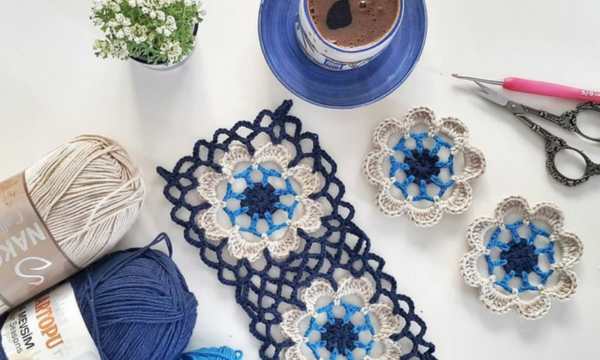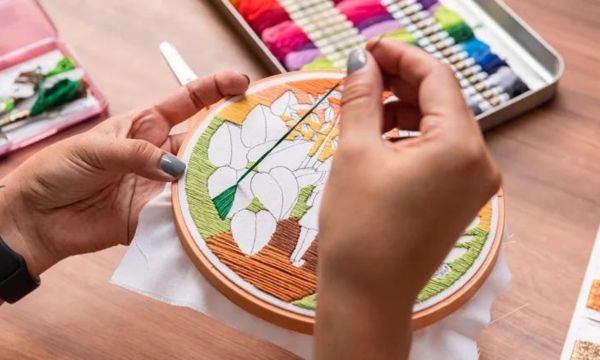Hand-dyed yarn is a great example of art and craftsmanship in textile art that dates back hundreds of years.
Ad
Adding color to threads is a complex process that turns them into bright and unique pieces suitable for a variety of textile projects. As we learn more about hand-dyed threads, we also learn about the artistic, technical, and cultural significance of hand-dyed threads, making them a beloved part of the craft world.
1. The Art of Hand-dyed Yarn
Hand-dyed yarn requires a lot of work and a careful balance between skill and intuition. Artists use a variety of techniques, such as dip-dye, tie-dye, and low-water soaking, to create a variety of colors and patterns. The colors on each thread tell the story of skilled artisans as they mix and dance on the thread to create a tapestry of color unmatched by mass-produced goods.
Ad
One of the best things about hand-dyed threads is that they are unique. No two skeins must be the same so each project is unique. This uniqueness appeals to artists and craftsmen who want to add a personal touch to their creations, setting them apart from identical, commercially painted lines.
2. Different Methods of Hand Dyeing
When dyeing by hand, you must carefully choose the dye you want to use. Natural dyes, such as those from plants and minerals, are often used, but synthetic dyes are available in a wider range of colors. To achieve the desired effects, artists carefully control such things as concentration, temperature, and time when mixing and applying dye.
Ad
A commonly used method of dyeing fabric is called tie dye. This involves gluing multiple lines together to form a resist pattern. This creates a beautiful combination of colored and uncolored surfaces. Dip dyeing, on the other hand, involves placing the thread in a dye bath and slowly moving the color up the fiber, creating a gradient effect. Low water soaking uses very little liquid, giving the finished product a mottled appearance that makes it unpredictable.
3. Importance of Culture
Hand-dyed yarn often has cultural significance, as different places and groups have their dyeing traditions that are passed down from generation to generation. Each thread has its own story, from the bright colors of traditional Indian textiles to the dark colors of African mud cloth. In some cultures, different colors have special meanings, making artists feel more connected to their work.
4. Long-term Appeal
At a time when sustainability is becoming increasingly important, hand-dyed yarns are becoming increasingly popular because they are better for the environment. Many artists emphasize doing things that are good for the environment, such as using as little natural dyes and water as possible. This focus on sustainability is in line with the growing interest in ethically produced, handmade materials. This makes hand-dyed yarn an eco-friendly choice for crafters who care about the world around them.
Conclusion
As we explore the various hand-dyed threads, we discover a wealth of artistry, technology, cultural heritage, and sustainability. These threads are not only necessary to make something but also carry tradition and personal expression. Hand-dyed yarn is a way for artists and craft enthusiasts to connect with a practice that is hundreds of years old and still popular in today’s world of creative expression.
FAQs
1. What is the difference between hand-dyed yarn?
Because they are handmade, hand-dyed threads are unique. Because each skein is hand-dyed, the product is unique and contains a mix of colors and patterns not found in mass-produced yarn.
2. What is the most common method for hand-dyed yarn?
Use very little liquid to create using various methods such as tie-dye (tying sections of thread together to create a resist pattern), dip-dye (dipping the thread in a dye bath to create an ombre effect to create), and paint with little water soaking Spotted appearance.
3. What dyes are used for hand-dyed yarn?
Artists use a variety of dyes, some derived from natural sources such as minerals and plants, and some made in laboratories. The color palette is influenced by the dyes used and during the dyeing process factors such as concentration, temperature and time are carefully controlled by the artist.
4. Is hand-dyed yarn important to culture?
Yes, hand-dyed yarn often has cultural significance. Different places and different people have their painting traditions that are passed down from generation to generation. Some colors can have a deeper meaning, giving the artist’s work more depth and meaning.
5. How does hand-dyed yarn help the environment?
Hand-dyed yarn helps the environment by using eco-friendly methods. Many artists use natural dyes and use as little water as possible when painting. This corresponds with the growing interest in materials that are handmade and ethically produced.
6. Why do crafters and artists prefer hand-dyed yarn?
Crafters and artists love hand-dyed threads because they are unique and can be used to create one-of-a-kind projects. Vibrant colors and unique patterns give handmade items a personal touch, setting them apart from store-bought painted items.


